Vibe Coders are at the heart of creating engaging and dynamic atmospheres through code. They ensure the digital environment aligns with the mood and energy of the physical space, enhancing user experiences in unique ways.
Skills necessary for a Vibe Coder include proficiency in audio and visual programming, a strong grasp of sensory technology, and abilities in both creative thinking and technical execution.
Candidates can write these abilities in their resumes, but you can’t verify them without on-the-job Vibe Coder skill tests.
In this post, we will explore 8 essential Vibe Coder skills, 10 secondary skills and how to assess them so you can make informed hiring decisions.
Table of contents
8 fundamental Vibe Coder skills and traits
The best skills for Vibe Coders include Programming Proficiency, UI/UX Design, Audio Processing, 3D Modeling, Animation Techniques, Network Security, API Integration and Version Control.
Let’s dive into the details by examining the 8 essential skills of a Vibe Coder.
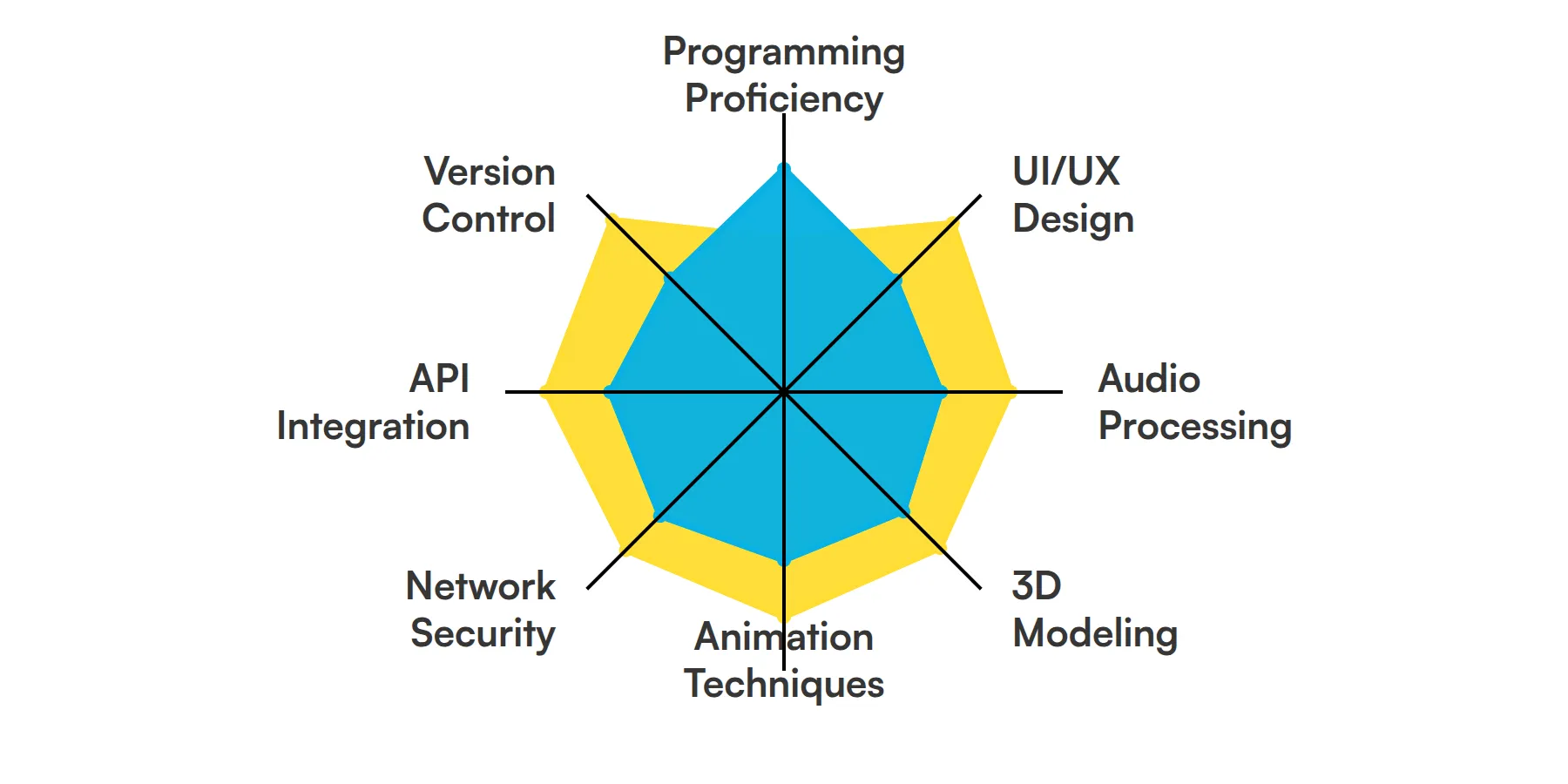
Programming Proficiency
A Vibe Coder must be adept in multiple programming languages such as Python, JavaScript, or Ruby. This skill is crucial for building and maintaining the interactive elements of digital environments, ensuring seamless user experiences.
For more insights, check out our guide to writing a Software Developer Job Description.
UI/UX Design
Understanding user interface (UI) and user experience (UX) design principles is key for a Vibe Coder. This skill allows them to create intuitive and engaging interfaces that enhance user interaction and satisfaction.
Audio Processing
Vibe Coders often work with sound-enhanced environments, making knowledge of audio processing important. This includes the ability to manipulate and integrate audio elements effectively within applications.
3D Modeling
Proficiency in 3D modeling is essential for creating visual elements that are both appealing and functional. Vibe Coders use this skill to craft detailed and immersive environments in various applications.
Animation Techniques
Animation skills enable Vibe Coders to bring static images to life, enhancing the dynamism of the digital experience. This involves understanding timing, motion, and visual storytelling.
Network Security
As Vibe Coders often deal with online environments, a strong grasp of network security ensures that these spaces are safe for users. This includes implementing protocols to protect data and prevent unauthorized access.
Check out our guide for a comprehensive list of interview questions.
API Integration
Integrating various APIs allows Vibe Coders to enhance functionality and interoperability of their projects. Mastery of API integration facilitates the creation of more complex and feature-rich environments.
Version Control
Using version control systems like Git is fundamental for Vibe Coders to manage changes to project codebases efficiently. This skill helps in maintaining the integrity and progression of development projects.
10 secondary Vibe Coder skills and traits
The best skills for Vibe Coders include Project Management, Data Visualization, Machine Learning, Augmented Reality, Cloud Computing, Performance Optimization, Cross-Platform Development, Interactive Storytelling, Electronics Basics and Debugging.
Let’s dive into the details by examining the 10 secondary skills of a Vibe Coder.

Project Management
Organizing, planning, and executing project tasks effectively ensures timely delivery of Vibe Coder initiatives. This skill helps in managing resources and timelines efficiently.
Data Visualization
Vibe Coders use data visualization techniques to represent complex data in an accessible way, enhancing user understanding and interaction.
Machine Learning
Applying machine learning algorithms can enhance the adaptability and personalization of environments created by Vibe Coders, making them more engaging and responsive to user behavior.
Augmented Reality
Knowledge of augmented reality technology allows Vibe Coders to overlay digital information on the real world, creating immersive experiences.
Cloud Computing
Utilizing cloud services enables scalable and flexible resource management for projects handled by Vibe Coders, supporting more robust and expansive development environments.
Performance Optimization
Vibe Coders must ensure that their applications run smoothly and efficiently, requiring skills in optimizing both front-end and back-end performance.
Cross-Platform Development
Developing applications that operate across different platforms ensures that Vibe Coders can reach a wider audience, enhancing user accessibility and engagement.
Interactive Storytelling
Crafting compelling narratives within digital environments engages users deeply, making storytelling a valuable skill for Vibe Coders.
Electronics Basics
A basic understanding of electronics can be beneficial for Vibe Coders working on projects that integrate hardware and software components.
Debugging
Effective debugging skills are necessary for Vibe Coders to quickly identify and resolve issues in their code, ensuring the stability and reliability of their applications.
How to assess Vibe Coder skills and traits
Assessing the skills and traits of a Vibe Coder can be a multifaceted task, given the diverse range of expertise required in this field. From programming proficiency to UI/UX design, and from audio processing to 3D modeling, a Vibe Coder must possess a unique blend of technical abilities and creative flair.
While resumes can provide a snapshot of a candidate's qualifications, they often fall short in revealing the depth of their skills and how well they align with your specific needs. Skills-based assessments are a reliable way to evaluate a candidate's true capabilities and fit for your team.
To streamline the hiring process, consider using Adaface on-the-job skill tests, which can lead to a 2x improved quality of hires. These assessments are designed to evaluate a wide array of skills, including network security, API integration, and version control, ensuring you find the right Vibe Coder for your project.
Let’s look at how to assess Vibe Coder skills with these 5 talent assessments.
Basic Computer Skills Test
Our Basic Computer Skills Test evaluates a candidate's knowledge across a broad range of fundamental computer skills. This includes areas such as data entry, Excel, typing, and system administration, providing a comprehensive overview of their technical abilities.
The test assesses candidates on their proficiency in Linux, computer programming aptitude, shell scripting, and data analysis. It challenges their ability to navigate and utilize various computer systems and software efficiently.
Successful candidates demonstrate a strong grasp of Excel functionalities, effective typing skills for data entry, and the ability to manage and troubleshoot systems, ensuring smooth operational capabilities.
UI/UX Design Test
Our UI/UX Design Test focuses on a candidate's ability to design and optimize user interfaces and experiences. It covers a wide range of topics from wire-framing and prototyping to user research techniques and interaction design principles.
This test evaluates the candidate's understanding of design thinking, UX design principles, and their ability to create visually appealing and functional designs for both web and mobile applications.
Candidates who perform well on this test are adept at employing UX writing and content strategy, understanding human-computer interaction fundamentals, and adhering to accessibility guidelines.
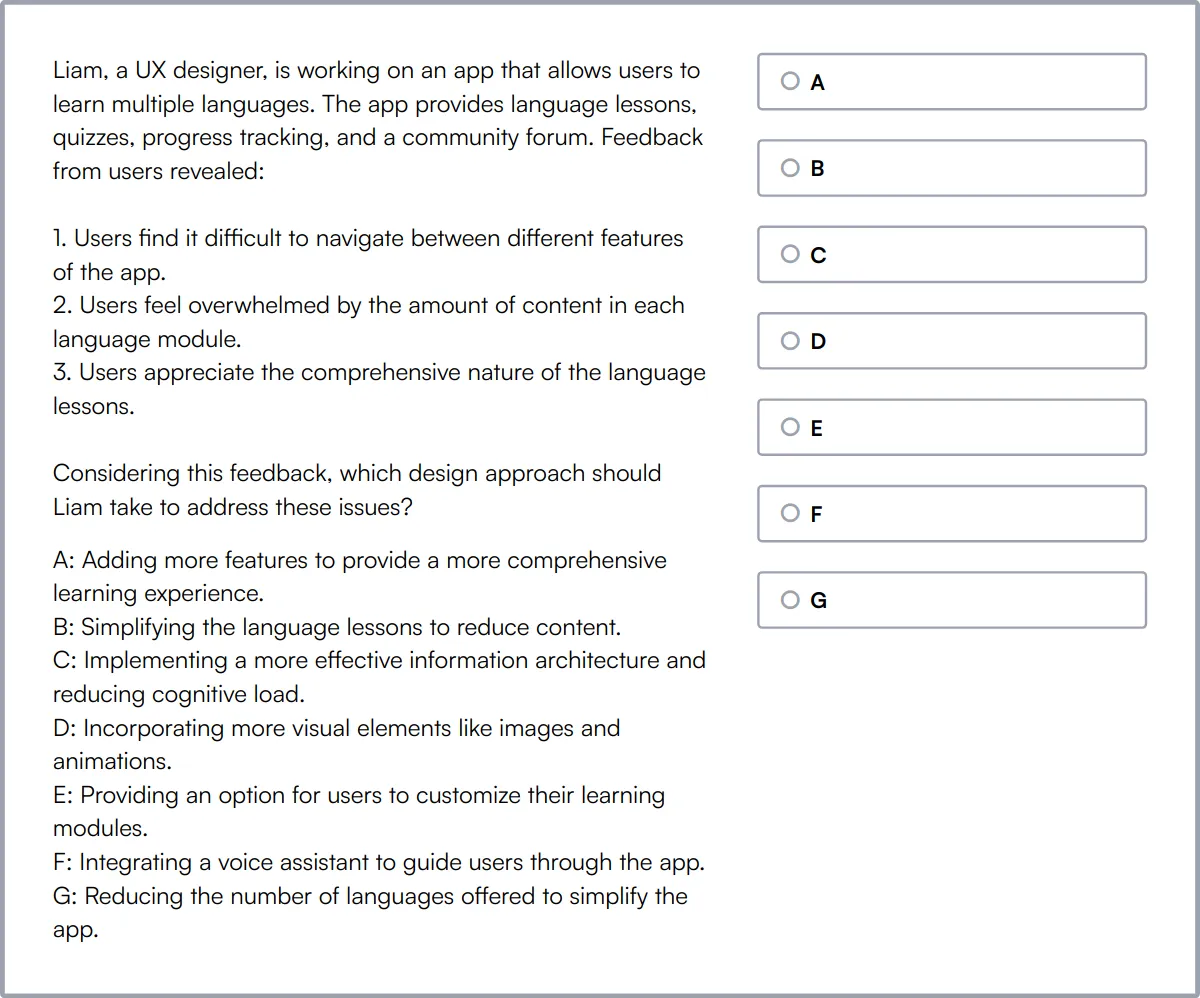
Cyber Security Assessment Test
The Cyber Security Assessment Test measures a candidate's expertise in the field of cybersecurity, including their knowledge of network security, cyber attacks, and cryptography.
Candidates are tested on their ability to identify and mitigate security risks such as SQL injections, malware, and various network attacks. The test also covers their skills in implementing cybersecurity defenses like firewalls, VPNs, and risk assessments.
High-scoring individuals are proficient in setting up and managing security protocols to protect against future cyber threats and ensure data integrity and confidentiality.
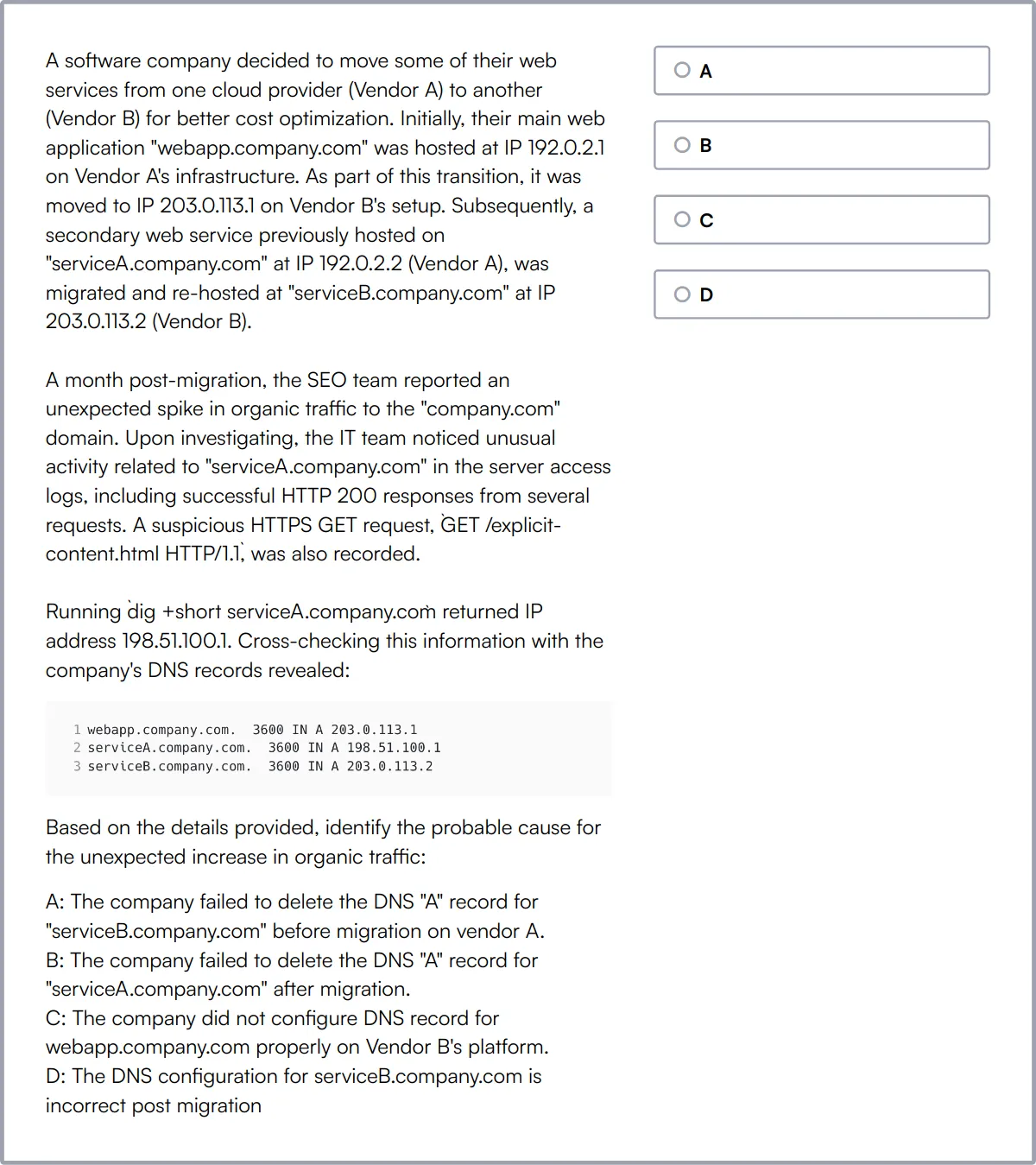
REST API Test
Our REST API Test evaluates a candidate's understanding of RESTful APIs, focusing on their ability to develop and interact with APIs effectively.
The test includes questions on REST principles, HTTP methods, authentication, and best practices in API design. It challenges candidates to demonstrate their technical aptitude in creating and testing backend services.
Candidates who excel in this test show a strong capability in integrating and managing APIs, which is critical for modern software development and system integration.
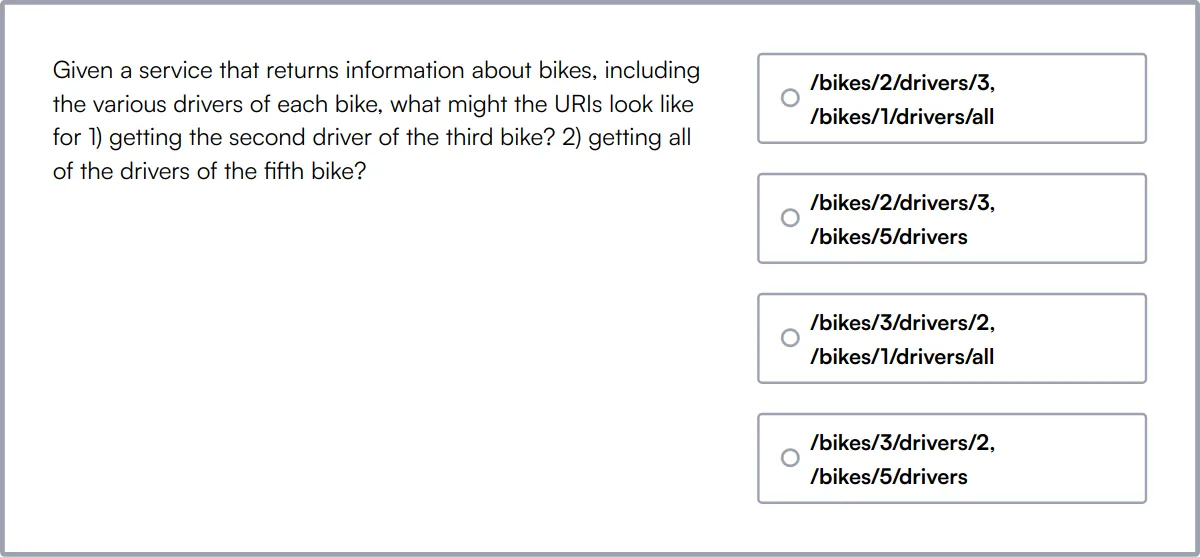
Git Online Test
The Git Online Test is designed to assess a candidate's proficiency with Git, focusing on repository management, branching, merging, and conflict resolution.
This test evaluates the candidate's knowledge of Git commands and concepts, including committing changes, rebasing, and using remote repositories. It tests their ability to manage source code effectively in a collaborative environment.
Successful candidates will demonstrate a thorough understanding of Git workflows and branching models, essential for maintaining version control and collaboration in software development projects.
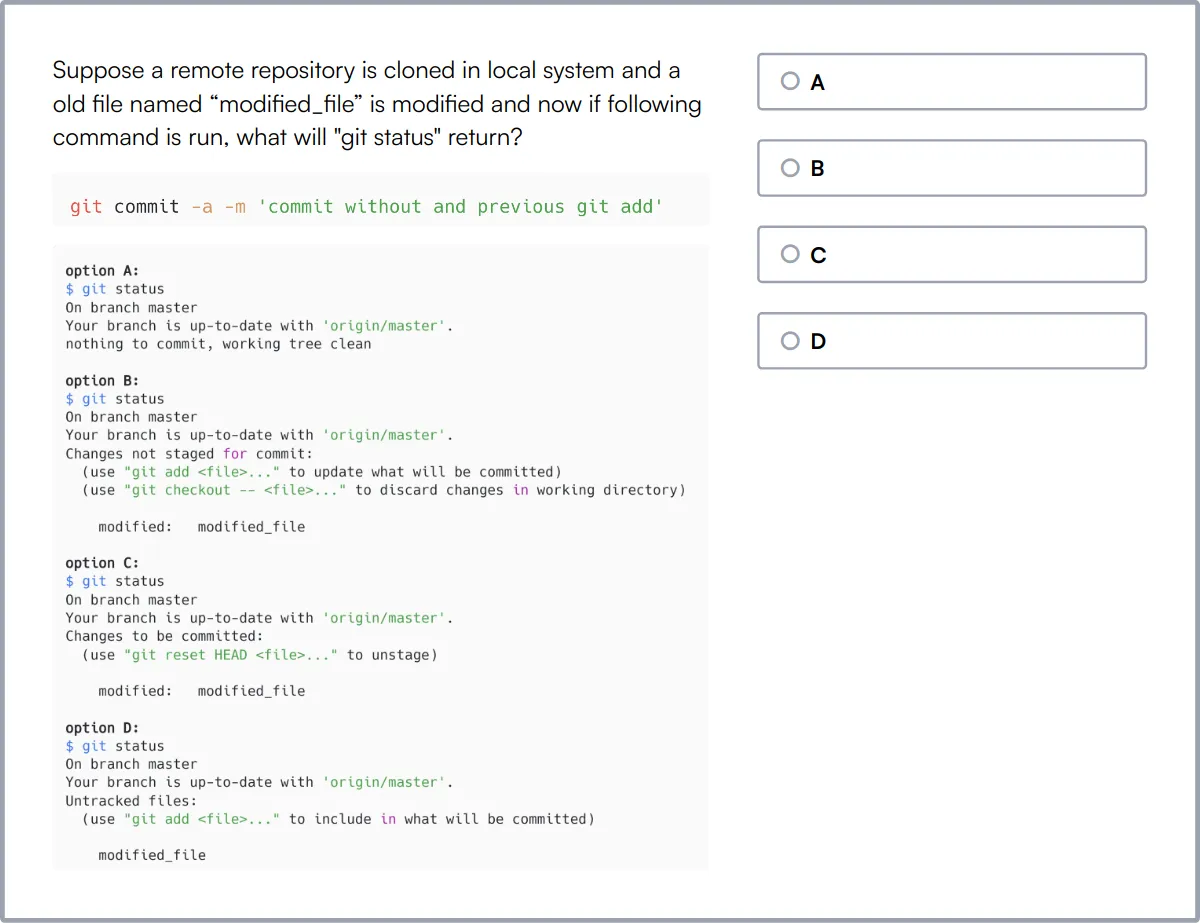
Summary: The 8 key Vibe Coder skills and how to test for them
| Vibe Coder skill | How to assess them |
|---|---|
| 1. Programming Proficiency | Evaluate the ability to write clean, functional code. |
| 2. UI/UX Design | Assess the skill in creating intuitive, user-friendly interfaces. |
| 3. Audio Processing | Check expertise in manipulating and enhancing audio files. |
| 4. 3D Modeling | Review the capability to create detailed, realistic 3D models. |
| 5. Animation Techniques | Determine proficiency in creating smooth, engaging animations. |
| 6. Network Security | Evaluate knowledge in protecting systems from cyber threats. |
| 7. API Integration | Assess the ability to connect and utilize external services. |
| 8. Version Control | Check skills in managing code changes and collaboration. |
C# (Coding): Debugging Test
Vibe Coder skills FAQs
What programming languages should a Vibe Coder be proficient in?
Vibe Coders should be skilled in languages like Python for machine learning, JavaScript for web development, and C++ for performance optimization. Familiarity with Swift or Kotlin is beneficial for cross-platform development.
How can UI/UX design skills impact the effectiveness of a Vibe Coder?
Strong UI/UX design skills enable Vibe Coders to create intuitive and engaging interfaces, enhancing user interaction and satisfaction. This is crucial in roles where user experience directly influences product success.
What are the best practices for assessing API integration skills in Vibe Coders?
Assessing API integration skills can be done through practical tests that involve connecting multiple systems or components. Reviewing past projects where the candidate has successfully integrated diverse APIs is also informative.
Why is knowledge of network security important for a Vibe Coder?
Network security knowledge is important to safeguard systems and data from cyber threats, especially when Vibe Coders work with cloud computing and network-dependent applications.
What tools and techniques should a Vibe Coder use for effective project management?
Vibe Coders should use tools like Jira for task tracking, Trello for project organization, and Asana for team collaboration. Agile methodologies are recommended to manage projects dynamically.
How does understanding electronics basics enhance a Vibe Coder's capabilities?
Understanding electronics basics allows Vibe Coders to better integrate and troubleshoot hardware-related projects, especially in roles involving augmented reality and interactive installations.
What role does machine learning play in the job of a Vibe Coder?
Machine learning can be used by Vibe Coders to automate data analysis, enhance user interactions, and optimize system performance, making it a valuable skill for complex problem-solving.
How important is cross-platform development for a Vibe Coder?
Cross-platform development is key for Vibe Coders to ensure that applications provide a seamless user experience across various devices, which is critical in today's diverse tech environment.

40 min skill tests.
No trick questions.
Accurate shortlisting.
We make it easy for you to find the best candidates in your pipeline with a 40 min skills test.
Try for freeRelated posts
Free resources



